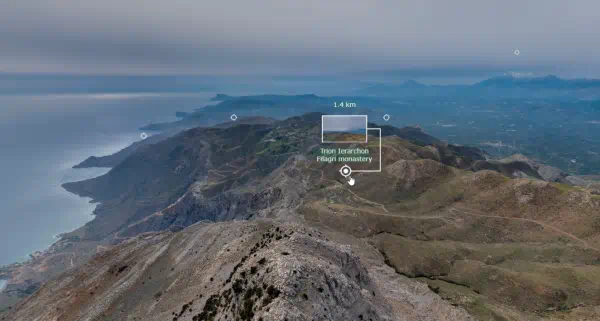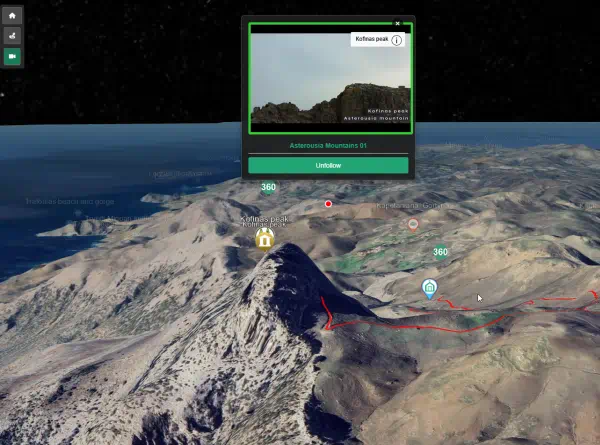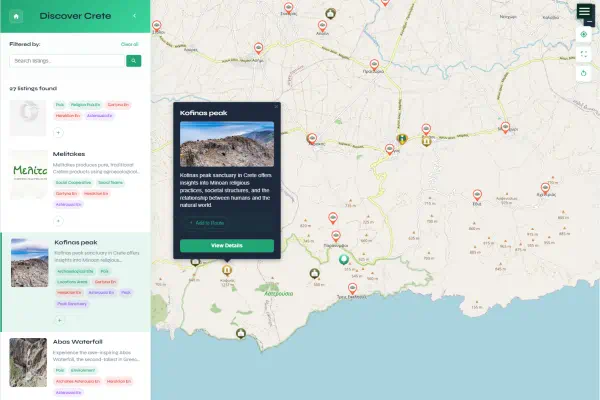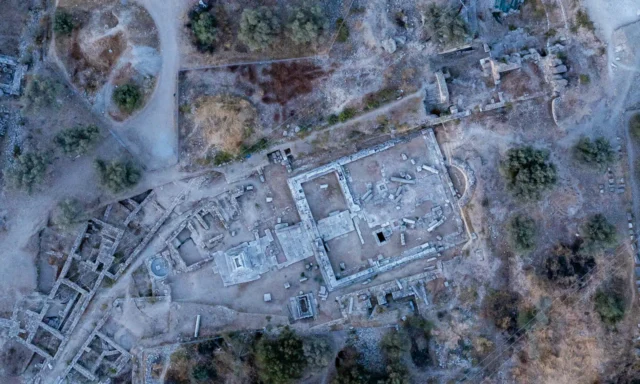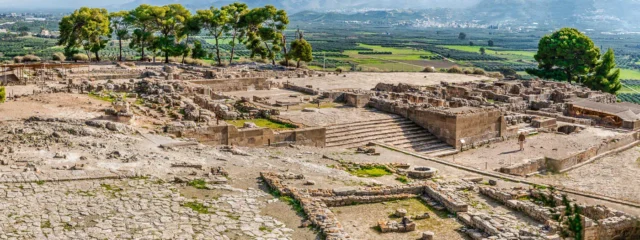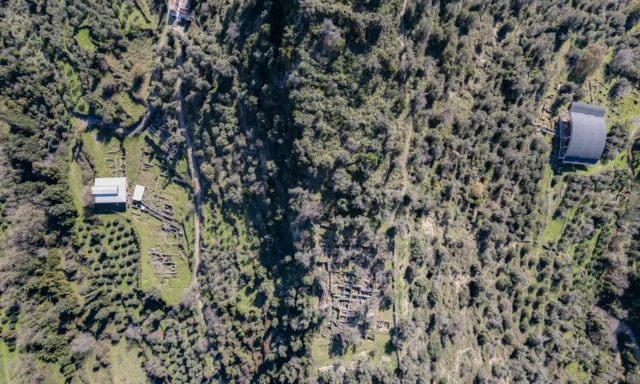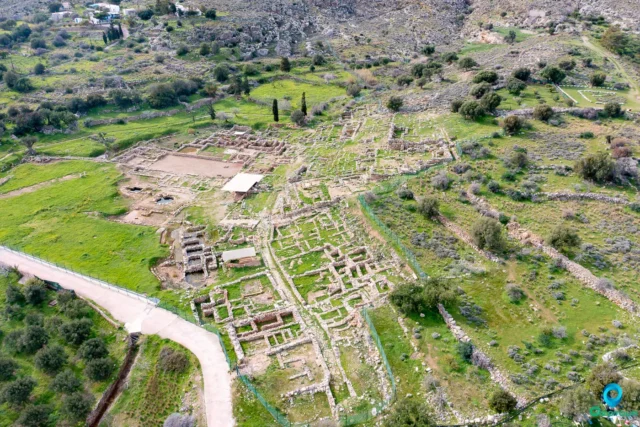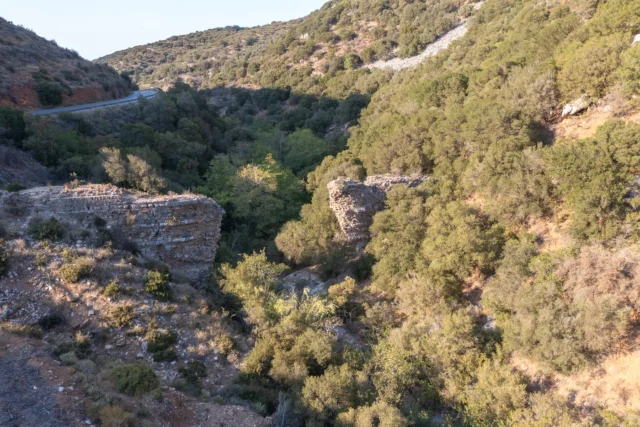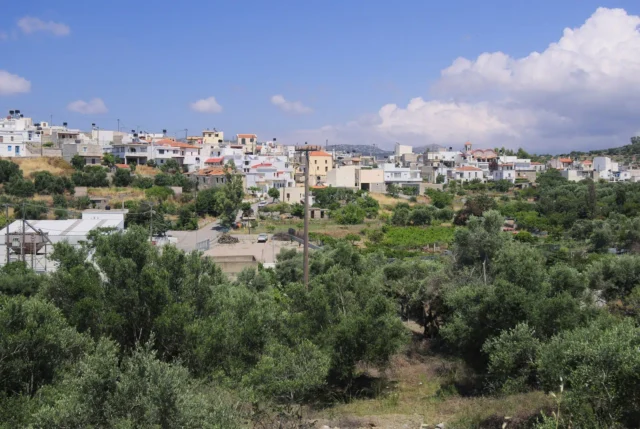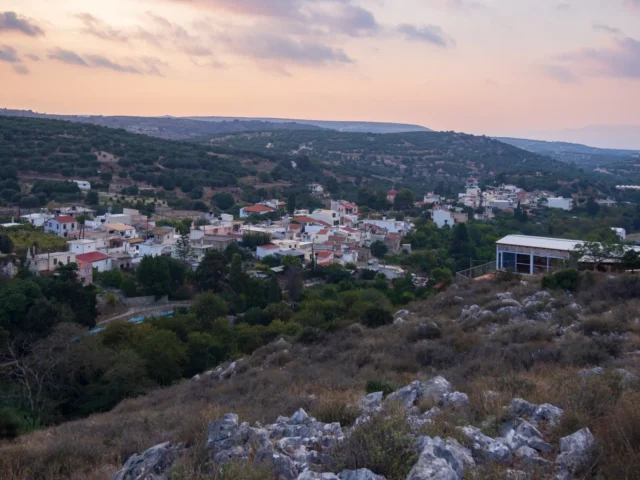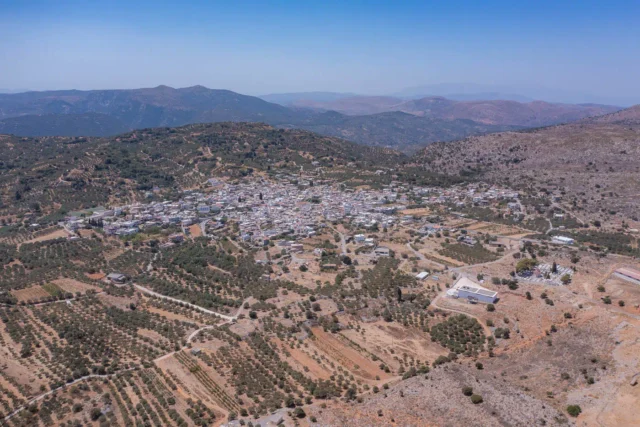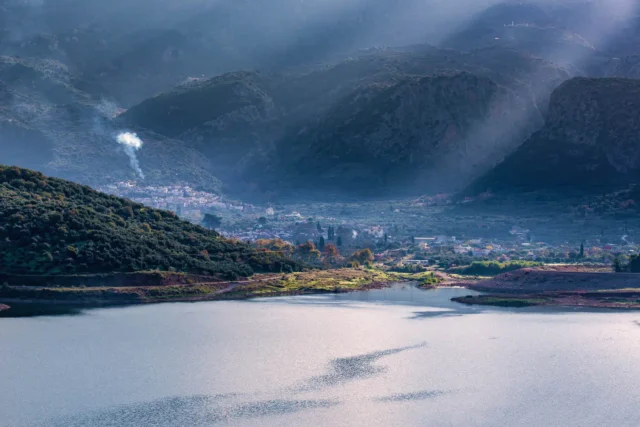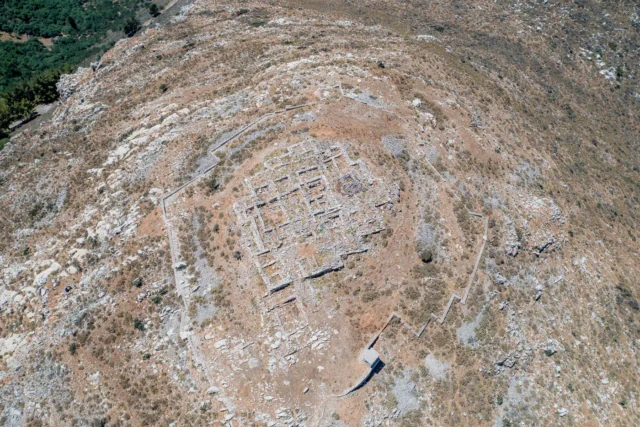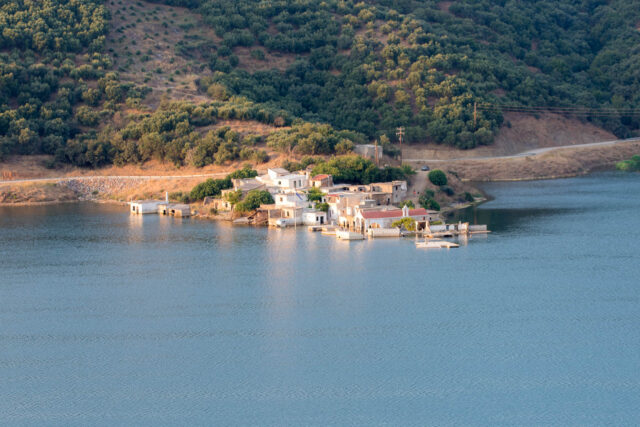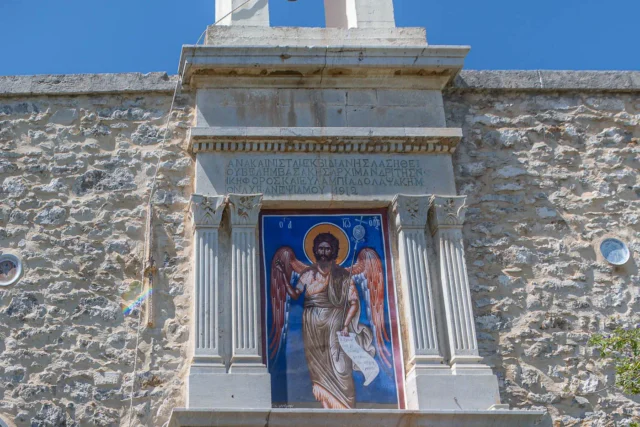Limenas Chersonissou (Port of Chersonissos)
Limenas Chersonissou, often simply referred to as Chersonissos, is a bustling town located on the northern coast of Crete, Greece. It is part of the Heraklion regional unit and is a popular tourist destination, known for its beautiful beaches, vibrant nightlife, and historical significance.
History
The area of Limenas Chersonissou has a rich history dating back to ancient times. The ancient city of Chersonisos, from which the modern town derives its name, was located in the area of the present-day harbor. Chersonisos thrived during the Minoan, Roman, and early Byzantine periods. Remnants of this ancient past can still be seen today. Archaeological evidence suggests that the site was inhabited during the Minoan period, and it reached its peak during the Roman era and the early Byzantine period. The town served as a vital port and commercial center. The ancient city boasted a harbor with breakwaters and covered shipyards, fountains with mosaics, and small waterfalls. Water was supplied by an impressive aqueduct from Lyttos, the ruins of which can still be seen in Xerokamares, near the village of Potamies. It also had a theater, of which ruins have also been found. The city even minted its own coins, depicting Artemis, Athena, or Apollo, and the eagle with open wings, similar to the coins of Lyttos. The word “Chersonasion” was also inscribed on them. During the Byzantine era, Chersonissos served as an episcopal seat, established by Titus.
The current settlement, however, is relatively recent. Due to pirate raids, the inhabitants abandoned their coastal homes and moved inland to the present-day village of Chersonissos. They carried the name of their settlement with them. The village is also called Megalo Chorio Chersonissou or Megali Chersonissos by the locals to distinguish it from other settlements in the area. The old church of the Dormition of the Theotokos, with its wood-carved iconostasis, is preserved in the village. The first reference to the village dates back to 1368. In the Venetian census of 1583, it is found with the name Chierissonisso with 160 inhabitants. In the Turkish one of 1671 it is mentioned with 40 haratsa. In 1834, together with the other settlements of Chersonissos, it had 60 families of Christians and 3 of Muslims. In the census of 1881, 307 Christians and 11 Muslims were found. It was an independent community from 1920 to 1998. The settlements of Limin Chersonissou, Koutouloufari and Piskopiano also belonged to this community. The current settlement is not mentioned in the 1881 census. We find it for the first time in the 1900 census with 133 inhabitants. During that period, a Gendarmerie station and a sub-customs office were established. When it became a community, the settlements of Koutouloufari and Piskopiano were included in it. The period of decline of the city is placed in the 7th century AD and is accompanied by a gradual abandonment, as shown by the excavation data. In more recent years, the current settlement is mentioned in the 1900 census with 133 inhabitants.
Geography
Limenas Chersonissou is situated on the northern coast of Crete, approximately 25 kilometers east of Heraklion. It is located at the foot of Mount Harakas, near the National Road Heraklion-Agios Nikolaos. The town is built around a natural harbor, which has played a crucial role in its development. The surrounding area is characterized by a mix of mountainous terrain and coastal plains, offering a variety of landscapes.
Economy
Limenas Chersonissou’s economy is heavily reliant on tourism. The town boasts numerous hotels, resorts, restaurants, bars, and shops catering to visitors. The harbor also plays a significant role, hosting fishing boats and tourist vessels. In addition to tourism, some residents are involved in agriculture, cultivating early vegetables and flowers, particularly in the Anissaras area.
Culture and Traditions
While Limenas Chersonissou is a cosmopolitan tourist destination, it retains some elements of traditional Cretan culture. The village of Chersonissos, located inland, offers a glimpse into traditional Cretan life. The church of the Dormition of the Theotokos in Chersonissos, with its wood-carved iconostasis, is a testament to the region’s religious and artistic heritage. Local festivals and celebrations also help to preserve cultural traditions.
Family and Social Life
Family and social connections remain important in Limenas Chersonissou. Despite the influx of tourists, the local community maintains a sense of identity and cohesion. Traditional Cretan hospitality is still evident, with locals often welcoming visitors and sharing their culture.
Settlement: Key Points
- Historical References: Ancient city of Chersonisos, Minoan, Roman, Byzantine periods
- Location: Northern coast of Crete, Heraklion regional unit
- Historical Significance: Important port in ancient times, episcopal seat in Byzantine era
- Current Status: Popular tourist destination, commercial center
- Population Data:
Year |
Population |
Notes |
|---|---|---|
1583 |
160 |
Chierissonisso |
1881 |
318 |
307 Christians, 11 Muslims |
1900 |
397 |
|
1920 |
463 |
|
1928 |
700 |
|
1940 |
597 |
|
1951 |
594 |
|
1961 |
610 |
|
1971 |
586 |
|
1981 |
808 |
|
1991 |
747 |
|
2001 |
882 |
|
2011 |
1115 |
|
2021 |
1301 |
References

